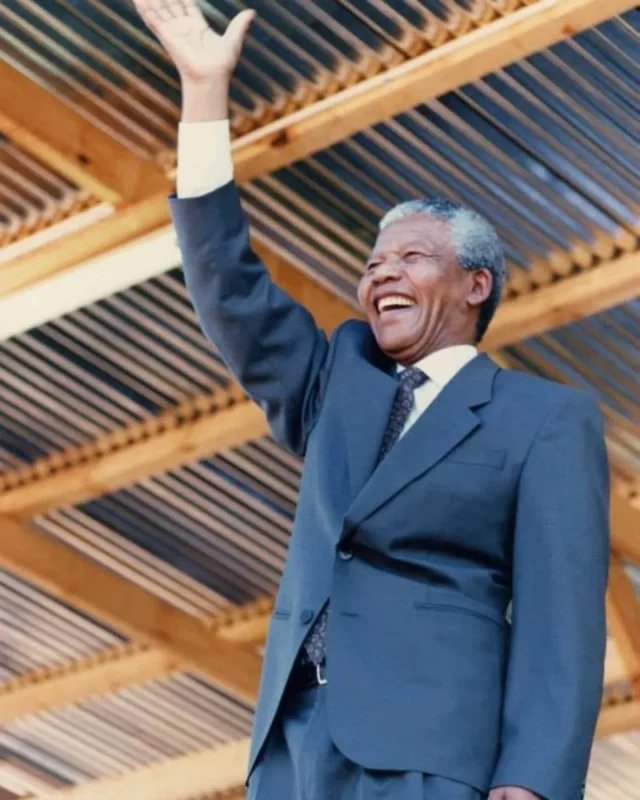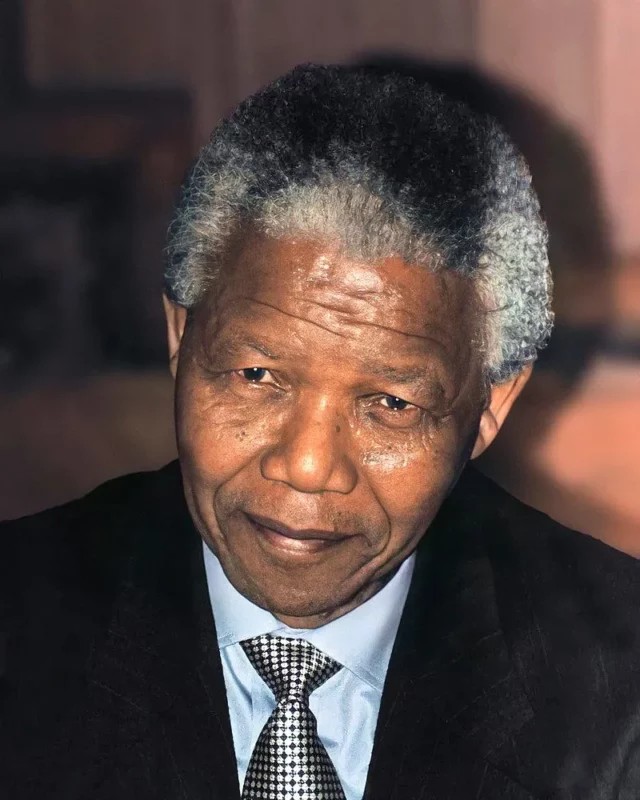Nelson Mandela, a prominent figure in the fight against apartheid, was a South African political leader and philanthropist. Born in 1918, Mandela’s early life was marked by his commitment to social justice and equality. Through his activism and resistance, he played a pivotal role in dismantling the apartheid system.
Despite enduring 27 years of imprisonment, Mandela emerged as a symbol of resilience and forgiveness. His presidency and post-apartheid contributions continue to inspire and shape the world, leaving behind a profound legacy.
Early Life and Upbringing
During his childhood in rural Transkei, Nelson Mandela experienced the hardships and inequalities that would shape his lifelong commitment to social justice.
Growing up in a small village, Mandela witnessed firsthand the effects of colonialism and racial discrimination on his community. He saw how his people were oppressed and marginalized, and this fueled his determination to fight for equality and freedom.
Mandela’s father, a local chief, instilled in him the values of leadership, integrity, and resilience. These early experiences taught Mandela the importance of standing up for what is right and advocating for the rights of others.
They laid the foundation for his future role as a champion for justice and equality, both in South Africa and on the global stage.

image source : facebook
Activism and Resistance Against Apartheid
Mandela’s commitment to social justice and equality led him to embark on a lifelong journey of activism and resistance against the oppressive apartheid regime in South Africa. He became an influential figure and a leading member of the African National Congress (ANC), a political organization committed to ending apartheid.
Mandela organized peaceful protests, strikes, and boycotts to challenge the discriminatory laws and policies of the apartheid government. However, when peaceful means failed to bring about change, he advocated for armed resistance as a last resort.
Mandela was arrested in 1962 and sentenced to life imprisonment for his anti-apartheid activities. Despite his incarceration, Mandela continued to inspire and mobilize resistance against apartheid, becoming a symbol of hope and resilience for the oppressed majority.
His unwavering determination and tireless efforts played a pivotal role in bringing an end to apartheid and establishing a democratic South Africa.
Imprisonment and Robben Island
After his arrest in 1962, Nelson Mandela was sentenced to life imprisonment for his anti-apartheid activities. This led him to be incarcerated on Robben Island. Mandela spent 18 years of his 27-year prison sentence on the island, enduring harsh conditions and limited contact with the outside world.
Despite the difficulties, Mandela remained resilient and continued to fight against the apartheid regime from within the prison walls. He organized political discussions, taught fellow prisoners, and advocated for better prison conditions.
Mandela’s time on Robben Island also served as a transformative period for him personally. He reflected on his beliefs and values, deepening his commitment to justice and equality.
His resilience and leadership during his imprisonment played a significant role in shaping the future of South Africa.

image source : facebook
Nelson Mandela Body Measurements And Personal Details:-
Born Name:Nelson Rolihlahla Mandela
Nickname:Black pimperne,Madiba
Profession:Politician, Writer, Lawyer, Activist,
Date of Birth:July 18, 1918
Birth Place:Mvezo, South Africa.
Hometown:Mvezo, South Africa.
Nationality:South African
Height (in Feet-Inches):6 feet 1 inches
Height (in Meters):1.85 m
Height (in Centimeters):185 cm
Weight (in Kilograms):88 kg
Weight (in Pounds):194 lbs
Sexual Orientation:straight
Body Shape:Straight
Father:Gadla Henry Mphakanyiswa
Mother:Noqaphi Nosekeni
Spouse/Partner:Graça Machel (m. 1998–2013), Winnie Mandela (m. 1958–1996), Evelyn Mase (m. 1944–1958)

image source : facebook
Check out body measurements of other actresses
| noman ijaz measurements |
| nyakim gatwech measurements |
| patrick stump measurements |
| powers boothe measurements |
| renee herbert measurements |
Negotiations and the End of Apartheid
Nelson Mandela played a pivotal role in the negotiations that ultimately led to the end of apartheid in South Africa. After spending 27 years in prison, Mandela was released in 1990 and immediately began working towards a peaceful transition to democracy. He engaged in talks with the South African government, led by President F.W. de Klerk, in order to find a way to dismantle apartheid and create a non-racial democratic society.
Mandela’s commitment to reconciliation and his ability to build trust among various political groups were instrumental in reaching a consensus. In 1994, South Africa held its first democratic elections, and Mandela was elected as the country’s first black president. His leadership during the negotiations and his vision for a united South Africa continue to inspire people around the world.
Presidency and Post-Apartheid Era
During his presidency and the post-apartheid era, Mandela continued to champion the ideals of reconciliation and unity in South Africa. As the first black president of the country, he faced the immense challenge of transforming a divided nation into a united and inclusive democracy.
Mandela worked tirelessly to bridge the racial divide and promote a spirit of forgiveness and understanding among all South Africans. He established the Truth and Reconciliation Commission, which aimed to address the injustices of the past and bring healing to the nation.
Mandela also focused on improving the lives of all South Africans, particularly the marginalized and disadvantaged communities. His presidency marked a new era for South Africa, one characterized by hope, progress, and the pursuit of equality for all its citizens.
Despite the immense challenges, Mandela’s leadership during this period laid the foundation for a more inclusive and harmonious South Africa.

image source : facebook
Legacy and Impact on the World
How did Nelson Mandela’s legacy and impact on the world shape the future of South Africa and inspire global change?
Nelson Mandela’s legacy is an enduring symbol of resilience, forgiveness, and the fight against injustice.
As South Africa’s first black president, Mandela’s leadership during the post-apartheid era marked a pivotal turning point in the country’s history. His commitment to reconciliation and nation-building helped South Africa transition from a divided society to a more inclusive and democratic nation.
Mandela’s impact on the world extends far beyond South Africa’s borders. His advocacy for human rights and equality inspired countless individuals and movements worldwide.
Mandela’s legacy continues to shape the future by reminding us of the power of forgiveness, unity, and the pursuit of justice for all. His life serves as a constant reminder that positive change is possible, even in the face of seemingly insurmountable challenges.
Frequently Asked Questions
What Was Nelson Mandela’s Favorite Childhood Memory?
Nelson Mandela’s favorite childhood memory is not explicitly stated in his biography. However, it is important to note that his childhood was marked by the injustices of apartheid and his later activism for equality and justice.
Did Nelson Mandela Ever Participate in Any Armed Resistance Movements During His Activism Against Apartheid?
Yes, Nelson Mandela did participate in armed resistance movements during his activism against apartheid. He co-founded the military wing of the African National Congress (ANC), Umkhonto we Sizwe, which carried out acts of sabotage against the apartheid regime.
How Did Nelson Mandela Spend His Time While Imprisoned on Robben Island?
During his time imprisoned on Robben Island, Nelson Mandela spent his days engaged in various activities, including studying, reading, gardening, and engaging in political discussions with fellow inmates. He also wrote letters and diaries which later became sources of inspiration and reflection.
What Were Some of the Major Challenges Nelson Mandela Faced During the Negotiations to End Apartheid?
During the negotiations to end apartheid, Nelson Mandela faced numerous major challenges. These included resistance from hardline factions within his own party, opposition from conservative white political groups, and the need to strike a delicate balance between the demands of various stakeholders.
After His Presidency, Did Nelson Mandela Continue to Be Actively Involved in Politics or Social Causes?
After his presidency, Nelson Mandela continued to be actively involved in politics and social causes. He established the Nelson Mandela Foundation, focused on promoting education, rural development, and social justice, and worked to combat HIV/AIDS through the Nelson Mandela Children’s Fund.

image source : facebook
Conclusion
In conclusion, Nelson Mandela’s life and legacy have left an indelible mark on the world.
Through his activism, resistance against apartheid, and imprisonment, Mandela became a symbol of hope and perseverance.
His negotiations and subsequent presidency marked the end of apartheid in South Africa, leading to a new era of equality and democracy.
Mandela’s impact on the world will forever be remembered, as he inspired countless individuals and showed the power of forgiveness and reconciliation.
